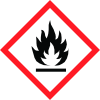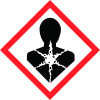S-27440
AccuStandard, Inc
Revision date : 2014-03-25



Note: Ingredients listed on restricted chemical lists
EC/CAS
88-85-7
Name of the chemical
Dinoseb (6-sec-butyl-2,4-dinitrophenol)
Concentration
0.100
EC/CAS
87-86-5
Name of the chemical
Pentachlorophenol (PCP),1
Concentration
0.100
EC/CAS
95-95-4
Name of the chemical
2,4,5-trichlorophenol,2
Concentration
0.100
EC/CAS
88-06-2
Name of the chemical
2,4,6-trichlorophenol,2
Concentration
0.100
EC/CAS
75-09-2
Name of the chemical
Methylene chloride
Concentration
48.950
General Information
Revision date
2014-03-25
Product name
S-27440
Supplier name
AccuStandard, Inc
Emergency telephone
AccuStandard, Inc
Icons in SDS
Company Information
Company name
AccuStandard, Inc
E-mail address of the competent person responsible for the Safety Data Sheet
edocs@accustandard.com
GHS Information
Signal word
Danger
Hazard Codes
Hazard statements (CLP)
H225, H302, H304, H315, H332, H335, H351
Hazard statements
Code
Statements
H225
Highly Flammable liquid and vapour
H302
Harmful if swallowed
H304
May be fatal if swallowed and enters airways
H315
Causes skin irritation
H332
Harmful if inhaled
H335
May cause respiratory irritation
H351
Suspected of causing cancer
Precautionary statements
Code
Statements
P202
Do not handle until all safety precautions have been read and understood.
P262
Do not get in eyes, on skin, or on clothing.
P264
Wash ... thoroughly after handling.
P280
Wear protective gloves/protective clothing/eye protection/face protection.
P284
[In case of inadequate ventilation] Wear respiratory protection.
P331
Do NOT induce vomiting.
P338
Remove contact lenses, if present and easy to do. Continue rinsing.
P352
Wash with plenty of water/...
P404
Store in a closed container.
Section 2
SECTION 2: Hazards identification
2.2 Label elements
3 * 2 HEALTH 2 0 3 FLAMMABILITY 0 - continued P264 - Wash thoroughly after handling. Do not take internally. Eye wash and safety equipment should be readily available. P280 - Protective gloves must be worn to prevent skin contact. P284 - Respiratory Protection: If workplace exposure limit(s) of product or any component is exceeded (see TLV/PEL), a NIOSH/MSHA approved air supplied respirator is advised in absence of proper environmental control.
Signal word
Danger
Hazard statements
H225 - Highly Flammable (Flammable liquids, category 2) H302 - Harmful if swallowed. (Acute toxicity, oral, category 4) H304 - Aspiration hazard if swallowed - may be fatal if swallowed and enters airways. (Aspiration hazard, category 1) H315 - Irritating to skin. (Skin corrosion/irritation, category 2) H332 - Harmful if inhaled. (Acute toxicity, inhalation, category 4) H335 - May be irritating to mucous membrane and upper respiratory system. (Specific target organ toxicity, single exposure; Respiratory tract irritation, category 4) H351 - This product is or contains a component that is classified (ACGIH, IARC, NTP, OSHA) as a suspect cancer hazard. (Carcinogenicity, category 2) Precautionary Codes: P202 - This product should only by used by persons trained in the safe handling of hazardous chemicals. P262 - Do not get in eyes, on skin or clothing. - continued
2.3 Other hazards
2.2.1 - Symptom of Exposure Health/Environment Highly Flammable (Flammable liquids, category 2) Overexposure may cause reproductive disorders based on tests with laboratory animals. May cause gastro-intestinal disturbances and lung irritation, chest pain and edema which may be fatal. Vapors may cause drowsiness and dizziness. Aspiration hazard if swallowed - may be fatal if swallowed and enters airways. (Aspiration hazard, category 1)
Potential health effects
May be irritating to eyes. Irritating to skin. (Skin corrosion/irritation, category 2) May be harmful if absorbed through the skin. (Acute toxicity, dermal, category 5) May be irritating to mucous membrane and upper respiratory system. (Specific target organ toxicity, single exposure; Respiratory tract irritation, category 4) Harmful if inhaled. (Acute toxicity, inhalation, category 4) Harmful if swallowed. (Acute toxicity, oral, category 4) 2.2.3 - Routes of Entry Inhalation, ingestion or skin contact. 2.2.4 - Carcinogenicity This product is or contains a component that is classified (ACGIH, IARC, NTP, OSHA) as a suspect cancer hazard. (Carcinogenicity, category 2)

